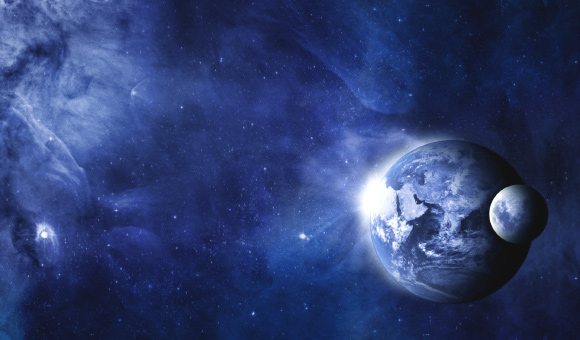Streams of space dust that continually bombard Earth’s atmosphere could deliver microbial life and life essential molecules from distant planets, or send Earth-based microorganisms to alien worlds, suggests a new study by a University of Edinburgh researcher.

Hypervelocity space dust is a unique entity in planetary systems like our Solar System, which is able to go past and enter the atmosphere of planets, collect samples of those planets and deposit samples of other planets. Image credit: Jonny Lindner.
Professor Arjun Berera, from the University of Edinburgh’s School of Physics and Astronomy, calculated how powerful flows of space dust could collide with particles in the atmospheric system of the Earth.
He found that small particles existing at 90 miles (150 km) or higher above the planet’s surface could be knocked beyond the limit of its gravity by space dust and eventually reach other planets. The same mechanism could enable the exchange of atmospheric particles between distant planets.
“A huge amount of space dust enters the Earth, on the scale of about 100 tons per day, that is composed of dust particles of varying masses (up to 1 gram) and enters the Earth’s atmosphere at very high speeds (6-43 mph, or 10-70 km/s). This hypervelocity space dust forms immense and sustained momentum flows in the atmosphere,” Professor Berera explained.
“For particles that form the thermosphere or above or reach there from the ground, if they collide with this space dust, they can be displaced, altered in form or carried off by incoming space dust. This may have consequences for weather and wind, but most intriguing is the possibility that such collisions can give particles in the atmosphere the necessary escape velocity and upward trajectory to escape Earth’s gravity.”
“Such events could enable bacteria and other forms of life to make their way from one planet in the Solar System to another and perhaps beyond.”
The finding suggests that large asteroid impacts may not be the sole mechanism by which life could transfer between planets, as was previously thought.
“Some bacteria, plants and small animals called tardigrades are known to be able to survive in space, so it is possible that such organisms — if present in Earth’s upper atmosphere — might collide with fast-moving space dust and withstand a journey to another planet,” Professor Berera said.
“The proposition that space dust collisions could propel organisms over enormous distances between planets raises some exciting prospects of how life and the atmospheres of planets originated,” he added.
“The streaming of fast space dust is found throughout planetary systems and could be a common factor in proliferating life.”
Details of the research will be published in the journal Astrobiology. The article is also publicly available at arXiv.org.
_____
Arjun Berera. 2017. Space dust collisions as a planetary escape mechanism. Astrobiology, in press; arXiv: 1711.01895







